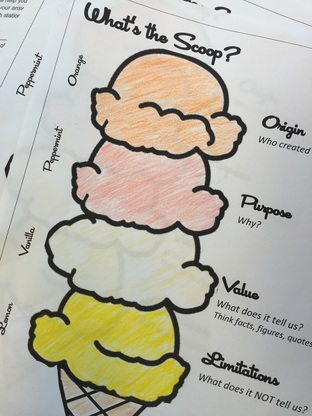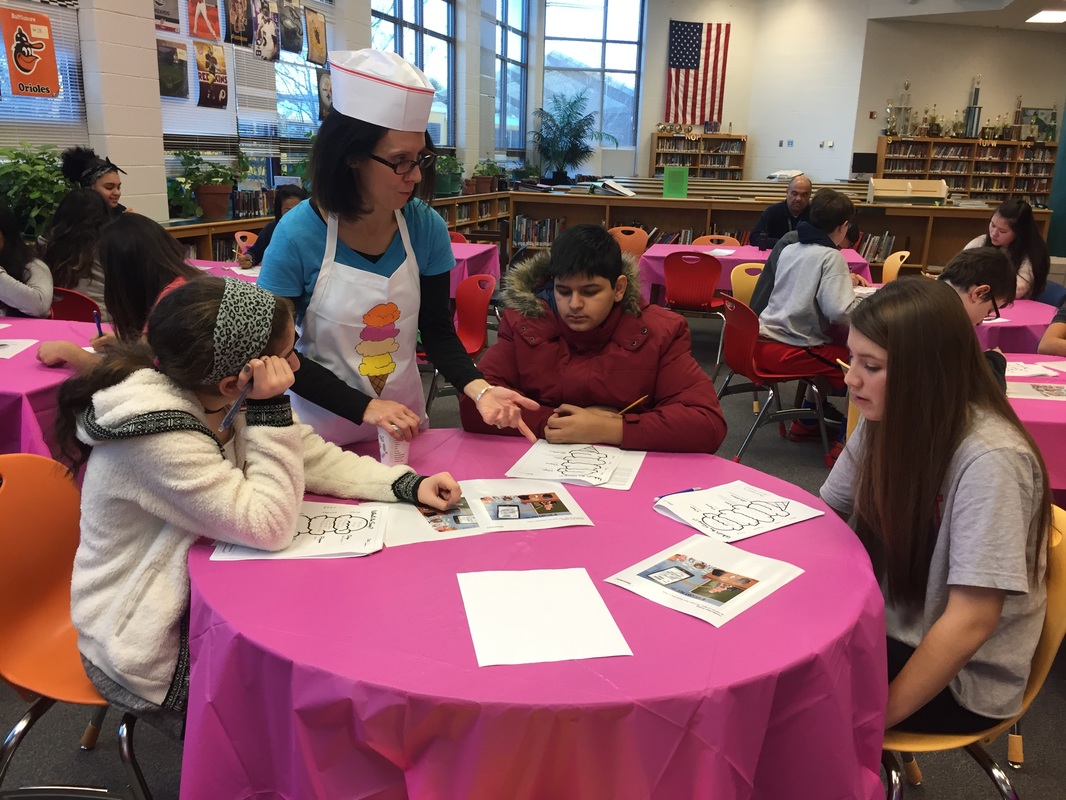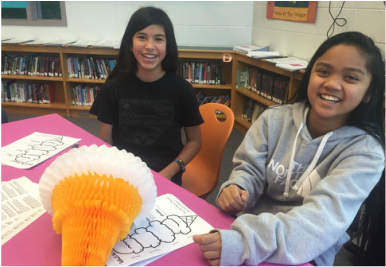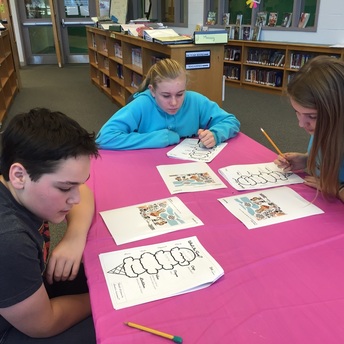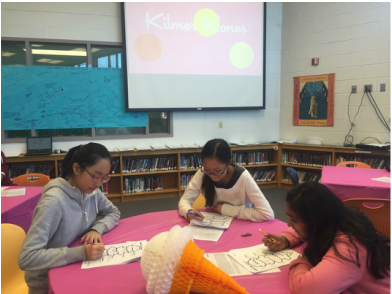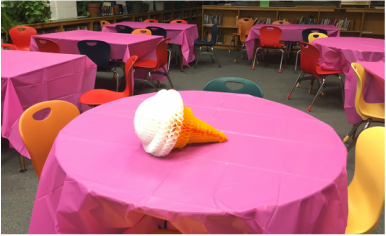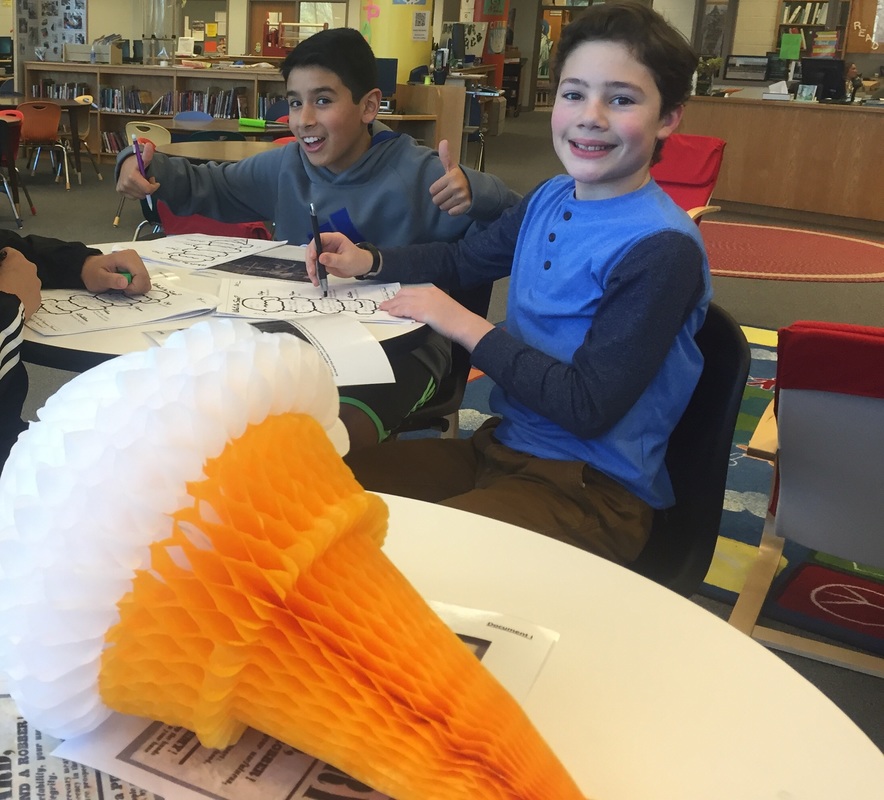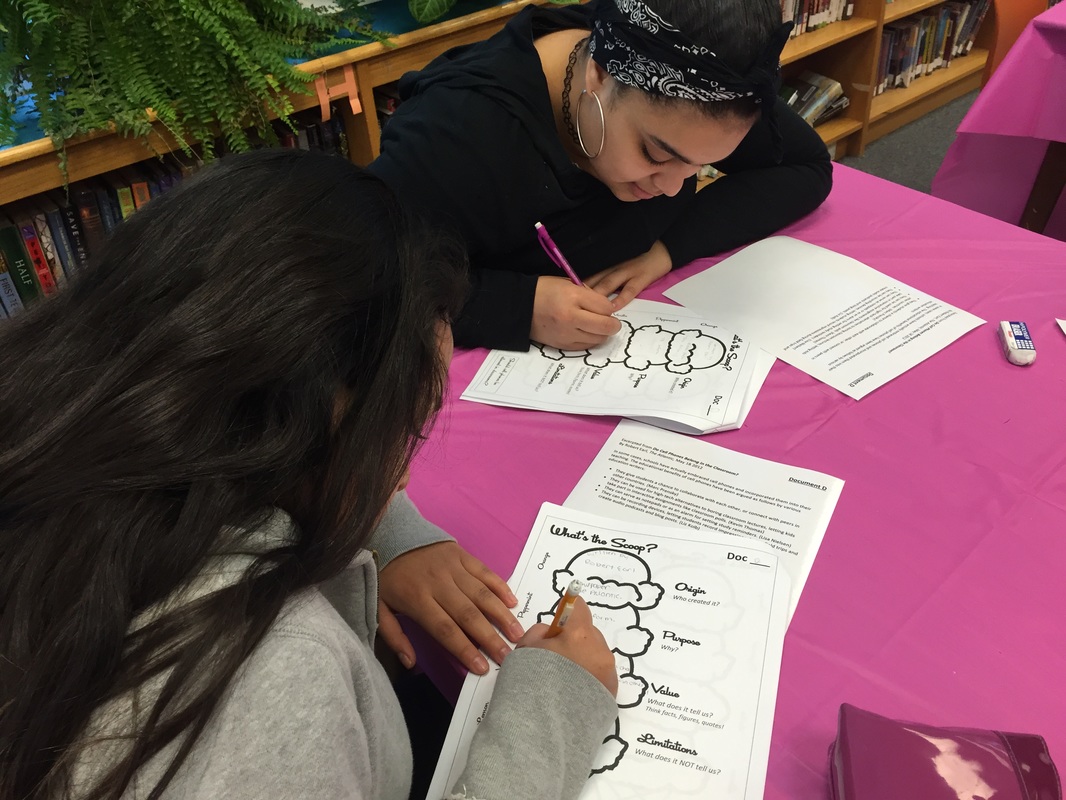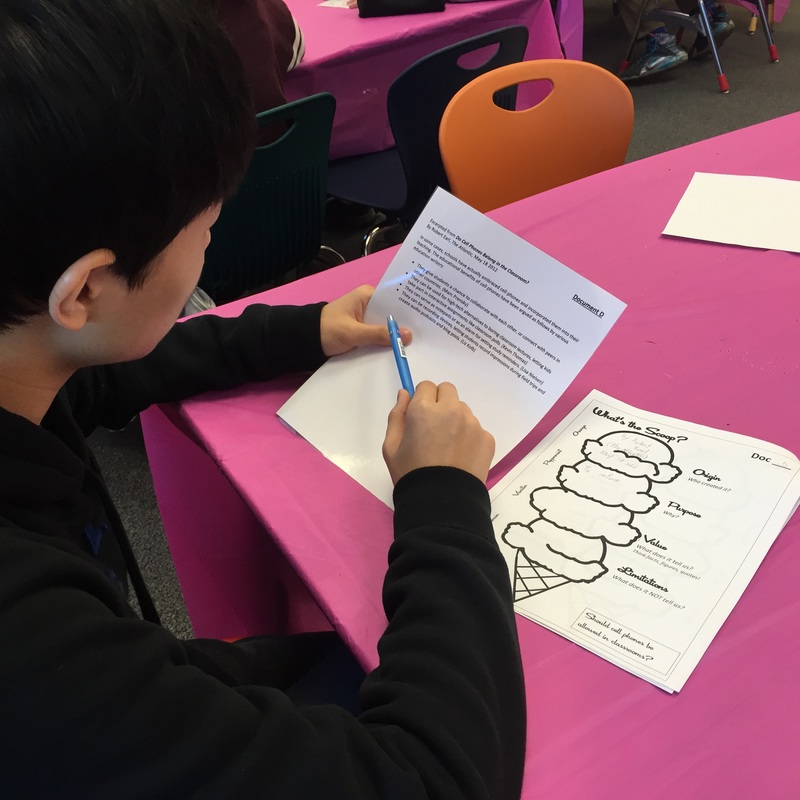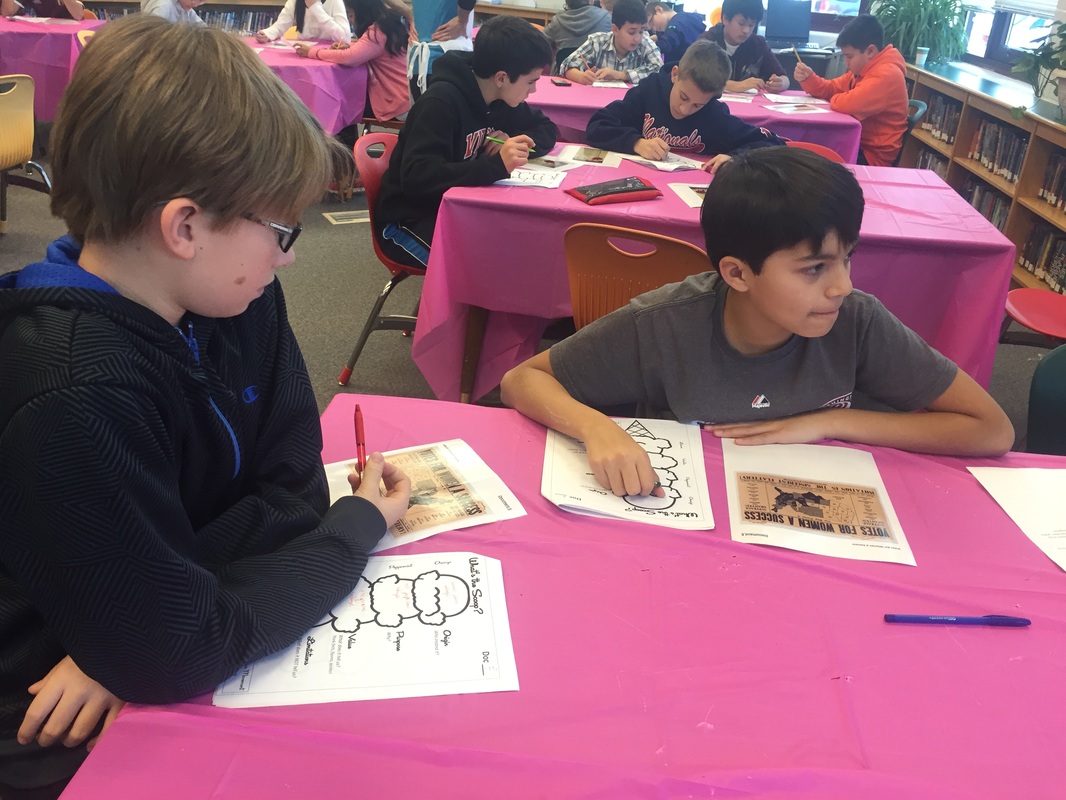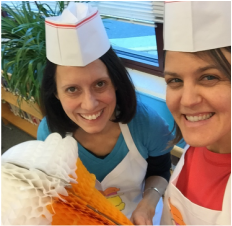What's the Scoop?
|
At Kilmer Middle School, we teach the OPVL method. If you haven't heard of it, it's used in IB Humanities classrooms as a method of analyzing historical documents and sources.
If you have heard of it, you know that while an extremely valuable tool, it can be a tough concept for middle school students. We wanted to find a way to make OPVL more approachable for our students in order to set the stage for their success in high school. "What's the Scoop?" was born. Here's the idea that bubbled up: we turned our Kilmer Library into a ice cream parlor: Kilmer Kones!
We then put together a compilation of primary sources. For example, if your unit of study was Westward Expansion you could compile several westward expansion documents. Some thoughts: -A photograph of the Wild West -An advertisement for land -A map of railroads -A diary entry from a Homesteader You get the idea. |
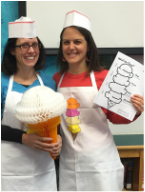
Then to make it more fun for kids, we dressed up (we've learned from experience that costumes are great attention grabbers)! Armed with our ice cream aprons and (admittedly) ridiculous hats, we taught kids about each ingredient of OPVL. Once they had it, we had them visit different stations where they filled out their OPVL organizer while investigating primary sources. We made sure that the evidence relevant to our students, so that they would first experience sweet success.
From now on, when we introduce primary or secondary sources, we remind kids to ask "What's the Scoop?" Then using the graphic organizer, they analyze the source. Teachers can build on this by having kids find their own source and have a classmate analyze it or you can do what we did and use "What's the Scoop?" to investigate primary sources for DBQ essays.
We are confident that soon, the kids will be able to do without the graphic organizer and OPVL will become something they do on their own, but for now, we are happy to provide them with a little sweet support. I mean, who doesn't like ice cream? Source Ideas for Analysis:
|
|


